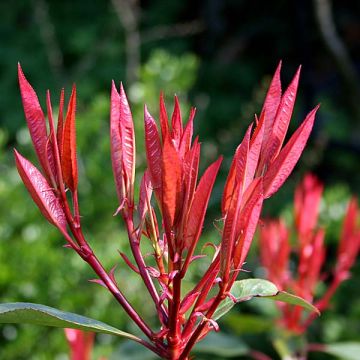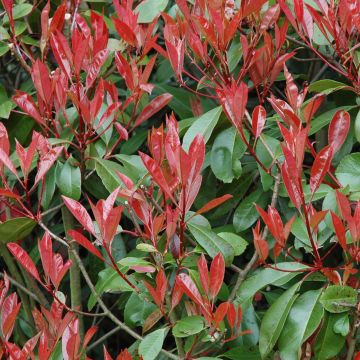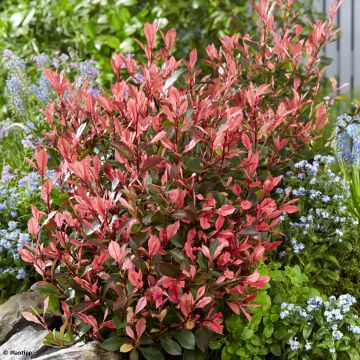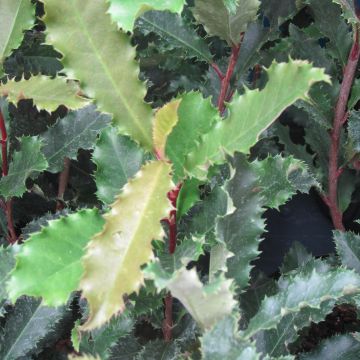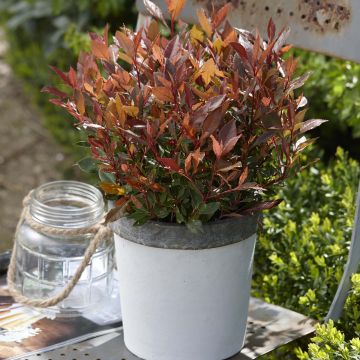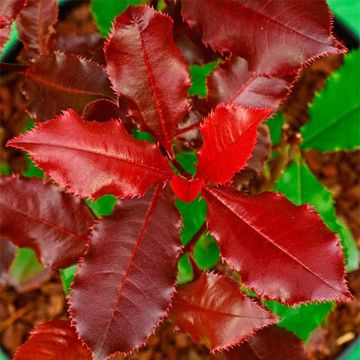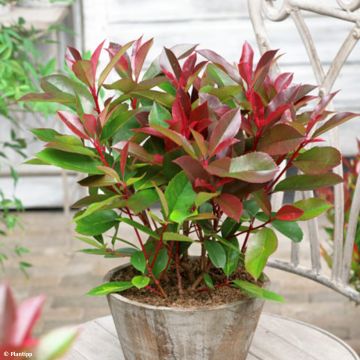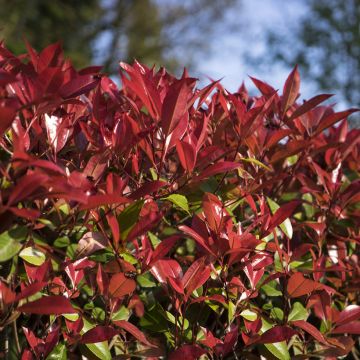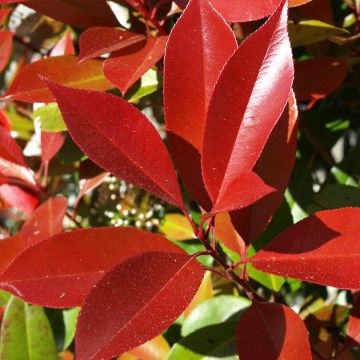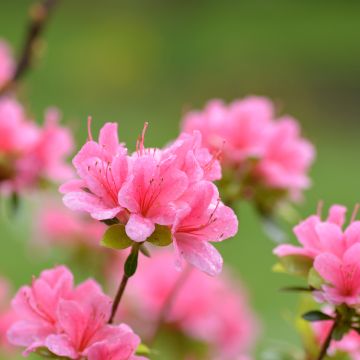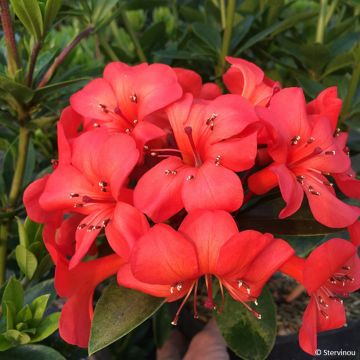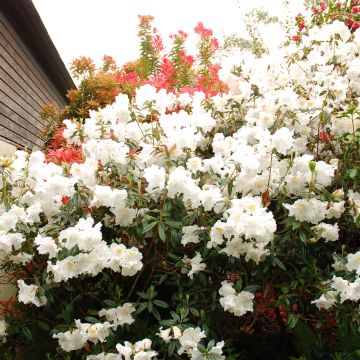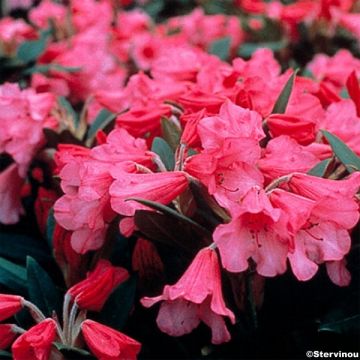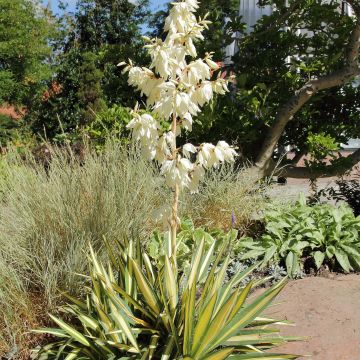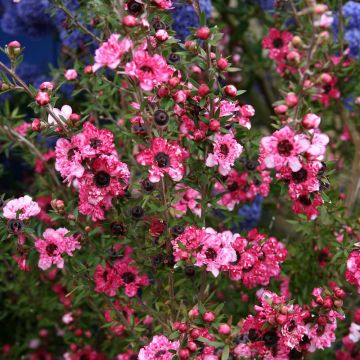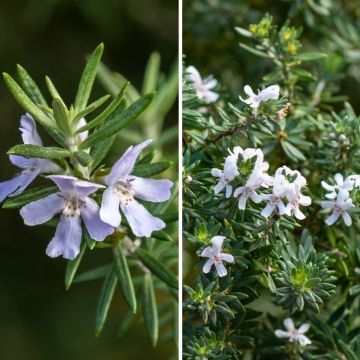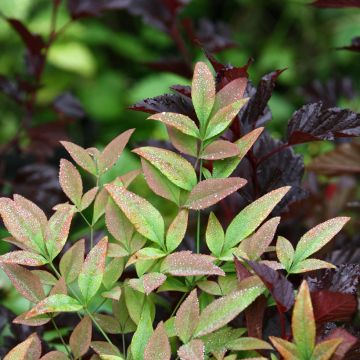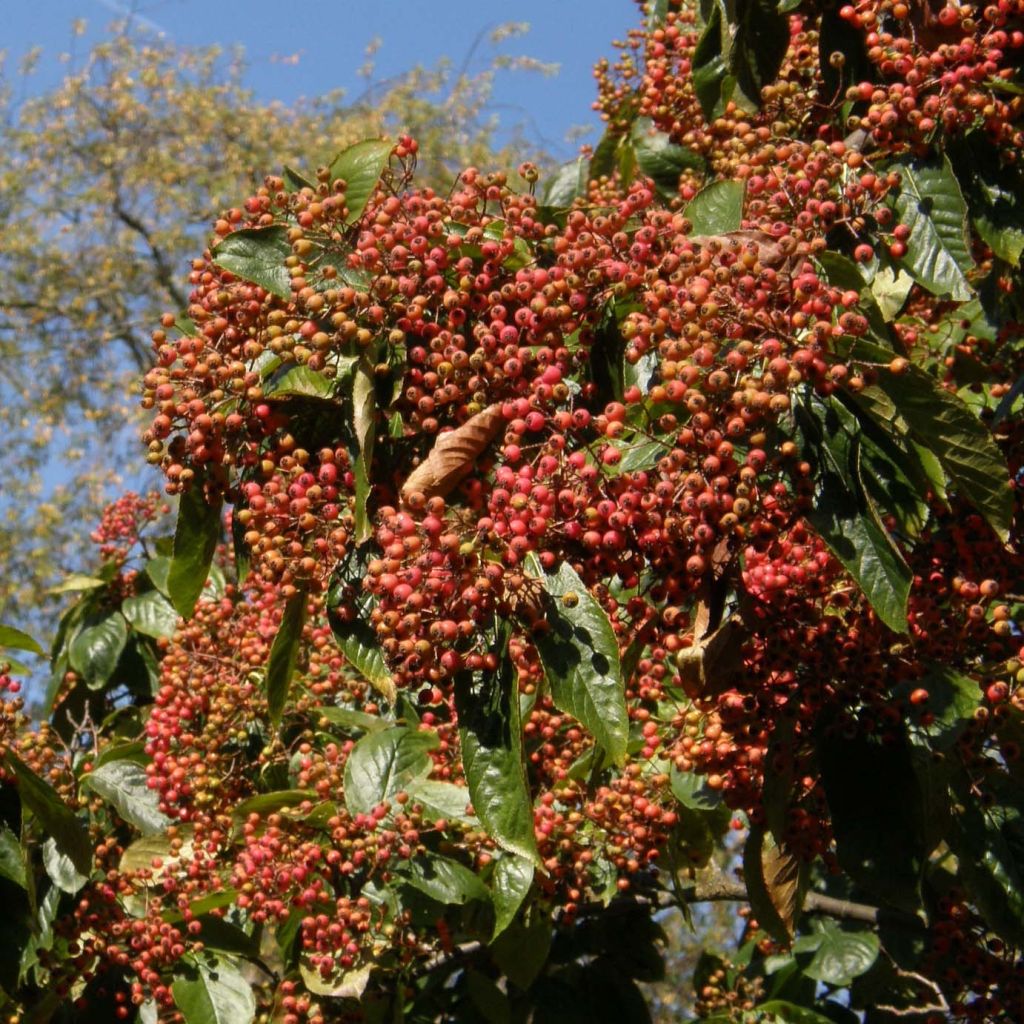

Photinia beauverdiana var. notabilis
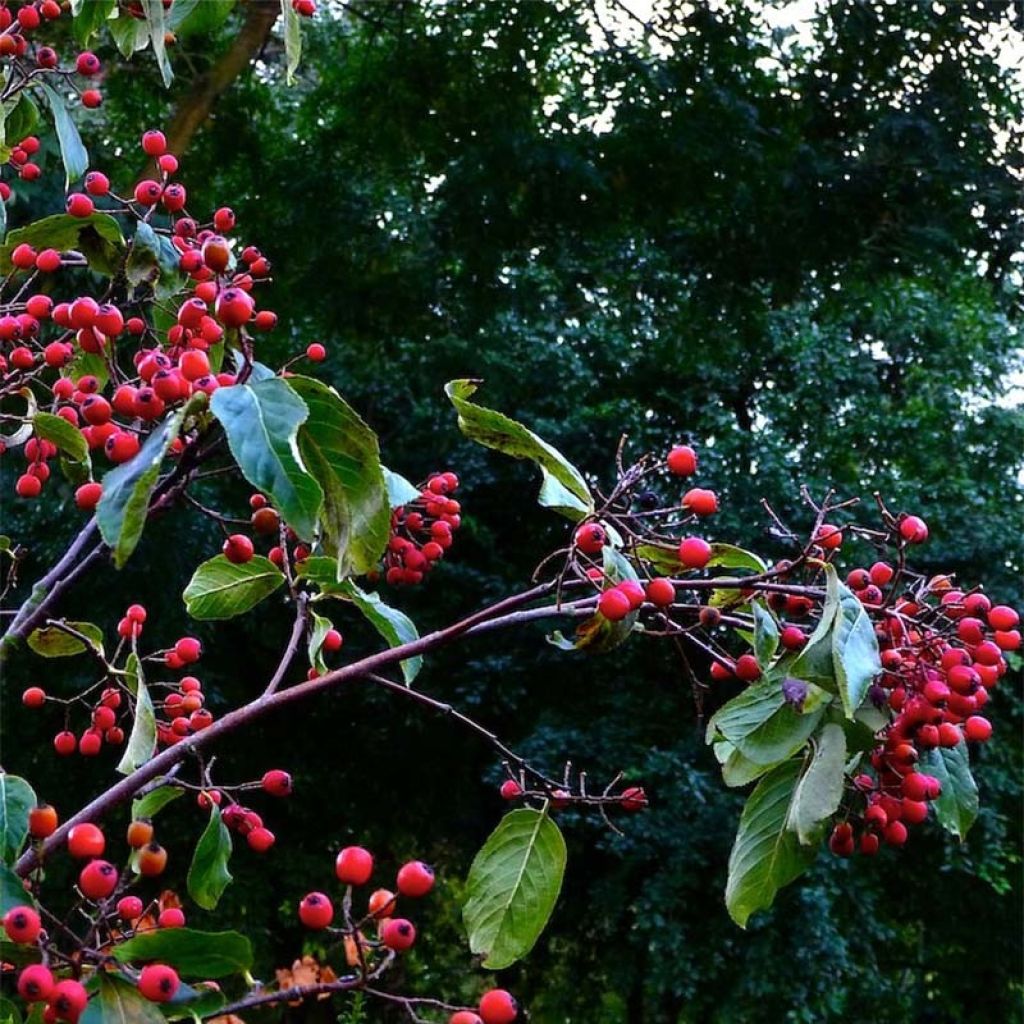

Photinia beauverdiana var. notabilis
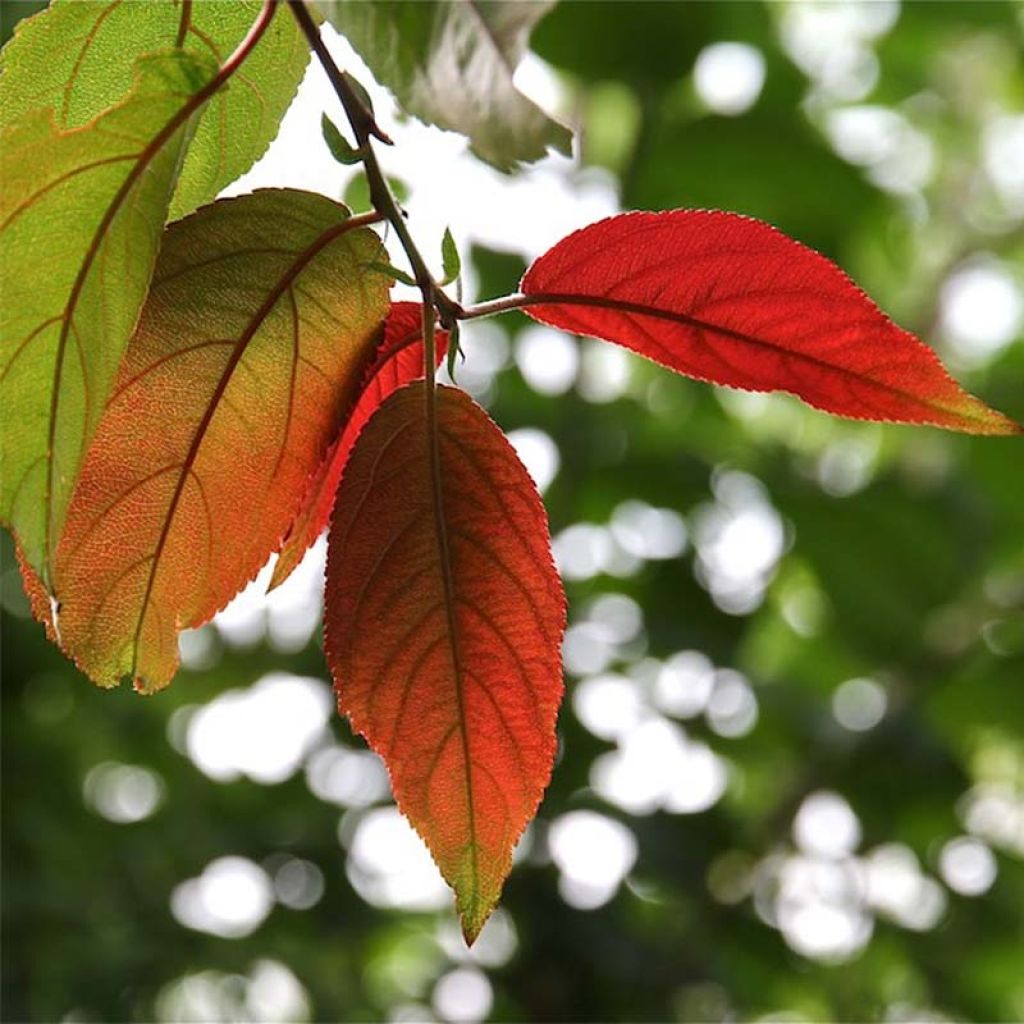

Photinia beauverdiana var. notabilis
Photinia beauverdiana var. notabilis
Photinia beauverdiana var. notabilis
Why not try an alternative variety in stock?
View all →This plant carries a 24 months recovery warranty
More information
We guarantee the quality of our plants for a full growing cycle, and will replace at our expense any plant that fails to recover under normal climatic and planting conditions.
From €5.90 for pickup delivery and €6.90 for home delivery
Express home delivery from €8.90.
Does this plant fit my garden?
Set up your Plantfit profile →
Description
Photinia beauverdiana var. notabilis is a vigorous photinia that undoubtedly deserves to be discovered. This superb Chinese arborescent species, which can exceed 6 m (19.7 ft) in height, bears remarkable deciduous foliage in spring and autumn, a highly decorative spring hawthorn flowering, and interesting fruiting at the end of the season. Superb as a standalone or planted in a mixed hedge, this large bush will thrive in deep, preferably non-calcareous, moist but well-drained and fertile soil, in full sun or partial shade.
Photinia beauverdiana var. notabilis is a small tree or large bush of the Rosaceae family. It originates from western China and withstands our winters perfectly. With rapid growth, this bush develops multiple trunks and a wide crown. At maturity, it will reach an average of 6 m (19.7 ft) in all directions. Its superb deciduous foliage is a major asset of this photinia. Its young spring leaves are covered in fuzz and display beautiful copper and silver hues. As they unfold, they gradually turn green, becoming dark green in summer, then take on flamboyant shades in October before falling, in yellow, orange, and dark red. These large leaves are entire, elongated, oval-shaped, and finely toothed along the edges. Flowering takes place in May-June, in the form of numerous umbel inflorescences, 5 cm to 8 cm (2 in to 3.1 in) in diameter, filled with small white flowers that are popular with pollinating insects. After pollination, the flowers give way to small round fruits, 5 mm to 8 mm (0.2 in to 0.3 in) in diameter, which successively turn from green to yellow to orange and finally red at the end of summer. The weight of the fruit clusters gracefully bends the branches of the photinia.
Create a stunning shrub border all year round with this magnificent Photinia: for example, combine it with witch hazel, pyracantha, Persian ironwood, Japanese maples, flowering dogwoods, and large Chinese azaleas. As it does not like drought or limestone, it will also thrive in the company of large hydrangeas. With its wide and bushy habit and magnificent foliage, it is also perfectly suited for the formation of free hedges, with the aim of creating a stunning screen with changing colours.
The genus name Photinia is derived from the Greek word photeinos, meaning bright or luminous, in relation to their glossy foliage.
Report an error about the product description
Photinia beauverdiana var. notabilis in pictures
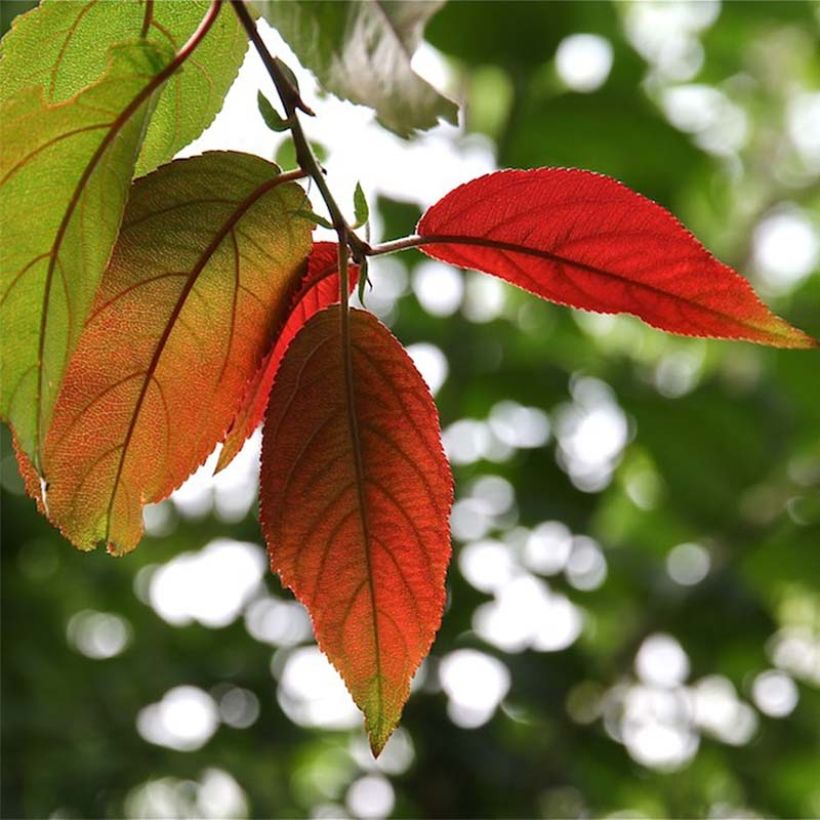

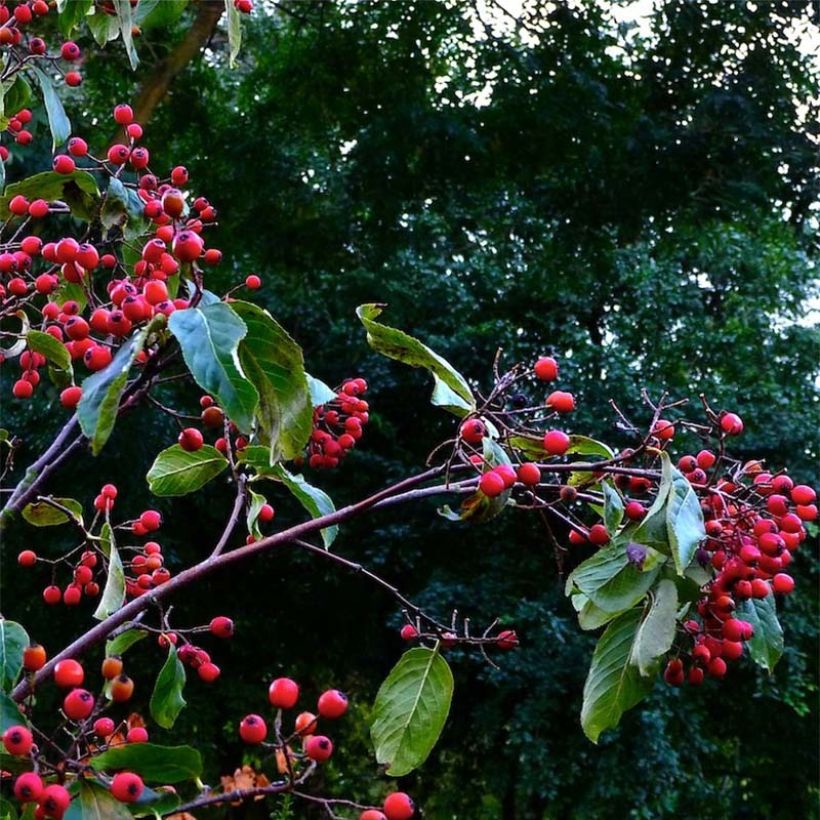

Plant habit
Flowering
Foliage
Botanical data
Photinia
beauverdiana
var. notabilis
Rosaceae
China
Other Photinias
Planting and care
Photinia beauverdiana var. notabilis thrives in full sun or partial shade, in deep, fertile, neutral to acidic soil, that is moist but well-drained. It fears limestone and dry soils, as well as very compact clay soils. Plant in autumn, to promote root growth, or in spring in well-watered regions. To help it establish, provide 20 litres of water every 15 days during the first summer following planting, and in case of dry summers. A spring application of well-decomposed compost will benefit it, improving its growth and making its foliage more abundant and colourful. Hardy, it can withstand temperatures as low as -20° C (-4° F).
Planting period
Intended location
Care
This item has not been reviewed yet - be the first to leave a review about it.
Evergreen shrubs
Haven't found what you were looking for?
Hardiness is the lowest winter temperature a plant can endure without suffering serious damage or even dying. However, hardiness is affected by location (a sheltered area, such as a patio), protection (winter cover) and soil type (hardiness is improved by well-drained soil).

Photo Sharing Terms & Conditions
In order to encourage gardeners to interact and share their experiences, Promesse de fleurs offers various media enabling content to be uploaded onto its Site - in particular via the ‘Photo sharing’ module.
The User agrees to refrain from:
- Posting any content that is illegal, prejudicial, insulting, racist, inciteful to hatred, revisionist, contrary to public decency, that infringes on privacy or on the privacy rights of third parties, in particular the publicity rights of persons and goods, intellectual property rights, or the right to privacy.
- Submitting content on behalf of a third party;
- Impersonate the identity of a third party and/or publish any personal information about a third party;
In general, the User undertakes to refrain from any unethical behaviour.
All Content (in particular text, comments, files, images, photos, videos, creative works, etc.), which may be subject to property or intellectual property rights, image or other private rights, shall remain the property of the User, subject to the limited rights granted by the terms of the licence granted by Promesse de fleurs as stated below. Users are at liberty to publish or not to publish such Content on the Site, notably via the ‘Photo Sharing’ facility, and accept that this Content shall be made public and freely accessible, notably on the Internet.
Users further acknowledge, undertake to have ,and guarantee that they hold all necessary rights and permissions to publish such material on the Site, in particular with regard to the legislation in force pertaining to any privacy, property, intellectual property, image, or contractual rights, or rights of any other nature. By publishing such Content on the Site, Users acknowledge accepting full liability as publishers of the Content within the meaning of the law, and grant Promesse de fleurs, free of charge, an inclusive, worldwide licence for the said Content for the entire duration of its publication, including all reproduction, representation, up/downloading, displaying, performing, transmission, and storage rights.
Users also grant permission for their name to be linked to the Content and accept that this link may not always be made available.
By engaging in posting material, Users consent to their Content becoming automatically accessible on the Internet, in particular on other sites and/or blogs and/or web pages of the Promesse de fleurs site, including in particular social pages and the Promesse de fleurs catalogue.
Users may secure the removal of entrusted content free of charge by issuing a simple request via our contact form.
The flowering period indicated on our website applies to countries and regions located in USDA zone 8 (France, the United Kingdom, Ireland, the Netherlands, etc.)
It will vary according to where you live:
- In zones 9 to 10 (Italy, Spain, Greece, etc.), flowering will occur about 2 to 4 weeks earlier.
- In zones 6 to 7 (Germany, Poland, Slovenia, and lower mountainous regions), flowering will be delayed by 2 to 3 weeks.
- In zone 5 (Central Europe, Scandinavia), blooming will be delayed by 3 to 5 weeks.
In temperate climates, pruning of spring-flowering shrubs (forsythia, spireas, etc.) should be done just after flowering.
Pruning of summer-flowering shrubs (Indian Lilac, Perovskia, etc.) can be done in winter or spring.
In cold regions as well as with frost-sensitive plants, avoid pruning too early when severe frosts may still occur.
The planting period indicated on our website applies to countries and regions located in USDA zone 8 (France, United Kingdom, Ireland, Netherlands).
It will vary according to where you live:
- In Mediterranean zones (Marseille, Madrid, Milan, etc.), autumn and winter are the best planting periods.
- In continental zones (Strasbourg, Munich, Vienna, etc.), delay planting by 2 to 3 weeks in spring and bring it forward by 2 to 4 weeks in autumn.
- In mountainous regions (the Alps, Pyrenees, Carpathians, etc.), it is best to plant in late spring (May-June) or late summer (August-September).
The harvesting period indicated on our website applies to countries and regions in USDA zone 8 (France, England, Ireland, the Netherlands).
In colder areas (Scandinavia, Poland, Austria...) fruit and vegetable harvests are likely to be delayed by 3-4 weeks.
In warmer areas (Italy, Spain, Greece, etc.), harvesting will probably take place earlier, depending on weather conditions.
The sowing periods indicated on our website apply to countries and regions within USDA Zone 8 (France, UK, Ireland, Netherlands).
In colder areas (Scandinavia, Poland, Austria...), delay any outdoor sowing by 3-4 weeks, or sow under glass.
In warmer climes (Italy, Spain, Greece, etc.), bring outdoor sowing forward by a few weeks.



































